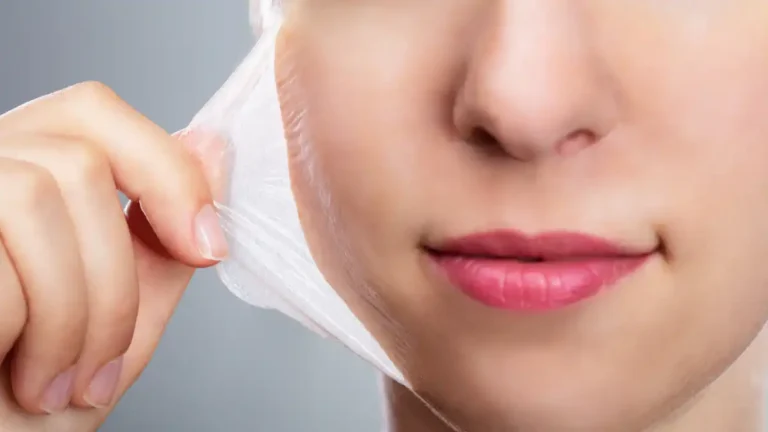Chemical Peel

A chemical peel is a cosmetic procedure that involves the application of a chemical solution to the skin, causing controlled exfoliation and peeling of the outer layers. This process promotes skin renewal, revealing smoother, rejuvenated skin with improved texture and tone. Chemical peels are used to address various skin concerns and are available in different strengths and formulations. Here’s a detailed overview of chemical peels in cosmetics:
Key Components of Chemical Peels:
1. Chemical Solutions:
– Chemical peels use various types of acids as the active ingredients in the chemical solution. The choice of acid and its concentration depend on the specific skin concerns being addressed and the desired level of exfoliation.
2. Types of Acids:
– Common acids used in chemical peels include:
– *Glycolic Acid:*Derived from sugar cane, it’s effective for mild to moderate peels.
– *Salicylic Acid:* Ideal for acne-prone skin, it penetrates oil-filled pores.
– *Lactic Acid:* Derived from milk, it’s suitable for sensitive skin and offers mild exfoliation.
– *Trichloroacetic Acid (TCA):* Used for medium-depth peels, addressing sun damage and wrinkles.
– *Jessner’s Solution:* A combination of salicylic acid, lactic acid, and resorcinol.
Cosmetic Applications of Chemical Peels:
1. Exfoliation and Skin Renewal:
– Chemical peels work by removing the outer layers of the skin, promoting exfoliation. This reveals new, healthier skin and stimulates the production of collagen and elastin.
2. Acne Treatment:
– Peels containing salicylic acid are effective for treating acne by unclogging pores and reducing inflammation.
3. Pigmentation Concerns:
– Chemical peels can address hyperpigmentation, including sunspots, age spots, and melasma, by promoting even skin tone.
4. Fine Lines and Wrinkles:
– Peels with ingredients like glycolic acid or TCA can improve the appearance of fine lines and wrinkles by stimulating collagen production.
5. Sun Damage:
– Chemical peels are used to reduce the effects of sun damage, including sunspots and uneven skin texture.
6. Scarring:
– Certain chemical peels, especially those with TCA, can improve the appearance of acne scars and other types of scars.
7. Texture and Tone Improvement:
– Chemical peels enhance overall skin texture and tone, giving the skin a smoother and more youthful appearance.
Types of Chemical Peels:
1. Superficial Peels:
– Superficial peels, often using mild acids like glycolic or lactic acid, target the outermost layer of the skin. These peels have minimal downtime, and individuals can resume regular activities quickly.
2. Medium Peels:
– Medium-depth peels, commonly using TCA, penetrate deeper into the skin. They are effective for addressing moderate skin concerns and require a longer recovery period.
3. Deep Peels:
– Deep peels, using strong acids like phenol, penetrate the deepest layers of the skin. These peels are reserved for severe skin issues and typically require a more extended recovery period.
Chemical Peel Procedure:
1. Consultation:
– Before undergoing a chemical peel, individuals have a consultation with a skincare professional to assess skin type, concerns, and determine the most suitable peel type.
2. Preparation:
– The skin is prepared by cleansing and, in some cases, using pre-peel skincare products to optimize results.
3. Application of Chemical Solution:
– The chemical solution is applied to the skin using a brush or applicator. The duration of application varies based on the peel type and individual skin response.
4. Neutralization (if necessary):
– Some peels require neutralization to stop the chemical reaction. Others are self-neutralizing.
5. Post-Peel Care:
– After the peel, the skin may be red and may peel over the next few days to a week. Proper post-peel care, including moisturization and sun protection, is crucial.
Considerations:
1. Professional Administration:
– Chemical peels should be performed by licensed and trained skincare professionals to ensure safety and optimal results.
2. Skin Sensitivity:
– Individuals with certain skin conditions, infections, or recent sun exposure may not be suitable candidates for chemical peels.
3. Sun Protection:
– Sun protection is crucial post-peel to prevent pigmentation changes and protect the newly revealed skin.
4. Multiple Sessions:
– A series of peels may be recommended for optimal results, depending on individual skin concerns.
5. Downtime:
– The extent of downtime varies based on the peel’s depth. Superficial peels may have minimal downtime, while deeper peels may require more extended recovery.
6. Post-Treatment Care:
– Following a chemical peel, individuals may be advised to avoid certain skincare products and procedures for a specified period.
Chemical peels offer a customizable approach to address various skin concerns, and the choice of peel type depends on individual skin needs and goals. A consultation with a qualified skincare professional is essential to determine the most suitable chemical peel and treatment plan for specific skin concerns.
